Common Door Threshold Problems Solved
Door thresholds, while often overlooked, play a crucial role in the comfort and functionality of your home. Many homeowners encounter issues with their thresholds, ranging from annoying draughts and irritating squeaks to wear and tear or even misalignment. These problems can affect not only the energy efficiency of your home but also its overall aesthetic appeal.
In this guide, we’ll delve into common door threshold issues and provide practical solutions to help you resolve them, ensuring your thresholds are as functional and visually pleasing as they should be.

Identifying Common Door Threshold Issues
- Draughts: Commonly caused by gaps between the door and threshold, leading to energy loss and cold draughts.
- Squeaking: Often a result of friction between wood or metal parts of the door and threshold.
- Wear and Tear: Visible as cracks, chips, or discolouration, particularly in high-traffic areas, affecting both appearance and function.
- Misalignment: Due to house settling, improper installation, or warping, causing door closure issues and uneven wear.
Recognising these issues is the first step towards finding effective solutions to maintain and enhance the performance and appearance of your door thresholds. Read our complete guide to door thresholds for more detailed information.
Solutions For Tackling Draughts in Rooms

Draughts in rooms due to door threshold gaps are a common and significant issue; addressing this helps improve home comfort and energy efficiency.
Solution: To combat draughts, the key is to seal any gaps between the door and the threshold. This can be achieved by installing a weatherstrip or door sweep. Choose a material that compresses against the door, creating a tight seal.
For larger gaps, consider using a threshold strip with an integrated rubber or silicone seal. These are easy to install and can be cut to fit the exact dimensions of your door.
Silencing Squeaky Thresholds
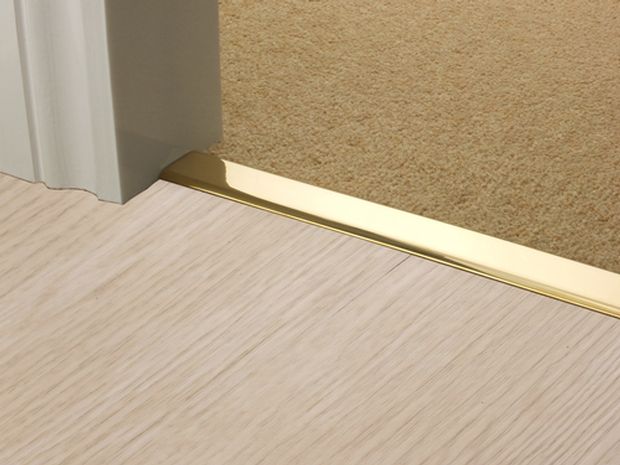
Squeaks are a frequent annoyance; resolving them improves the home’s overall ambience and functionality.
Solution: Squeaks in thresholds are often due to friction. A simple fix is to identify the exact source of the squeak and apply a lubricant, such as WD-40 or a silicone-based spray, to the affected area.
If the squeak persists, check for loose screws or fittings and tighten them. In some cases, the threshold may need to be repositioned slightly to alleviate tension.
Repairing and Replacing Worn Thresholds
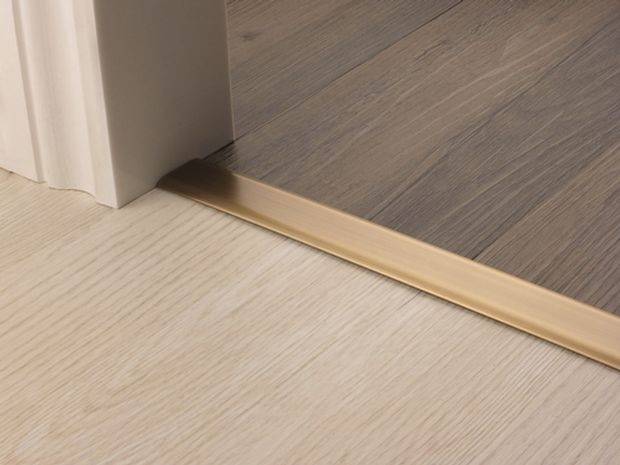
Long-term use and constant foot traffic can lead to wear in door thresholds. Prolong the life of thresholds with this repair and replacement advice.
Solution: For thresholds showing signs of wear, such as cracks or chips, start by cleaning the area thoroughly. Small cracks in wooden thresholds can be filled with wood filler, then sanded and repainted or varnished to match the original finish.
For metal thresholds, consider using a metal epoxy filler. If the damage is extensive, replacing the threshold might be the most effective solution.
Correcting Misaligned Thresholds
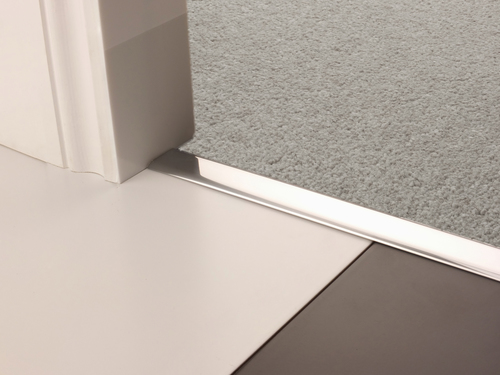
Misalignment can cause functional and aesthetic issues, even affecting the accessibility and safety of your home.
Solution: Misalignment can often be corrected by adjusting the threshold’s position. Loosen the screws holding the threshold in place, realign it so that it is level and even, and then retighten the screws.
In some cases, particularly in older homes where settling has occurred, you may need to replace the threshold with a new one that fits the altered doorway better.
Easy DIY Tips for Door Threshold Maintenance
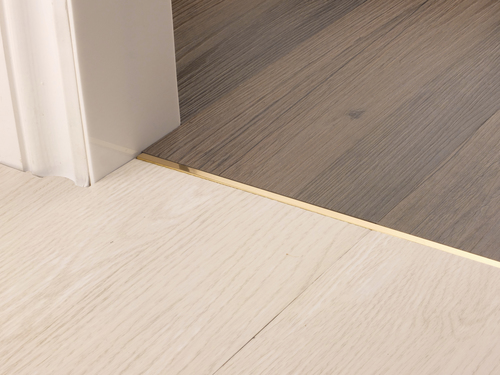
Regular maintenance is key to extending the life of your door thresholds and ensuring they remain functional and attractive. Here are some simple but effective DIY maintenance tips:
- Regular Cleaning: Keep thresholds clean by regularly sweeping or vacuuming to remove dirt and debris. For deeper cleaning, use a mild detergent and water for most materials, but avoid harsh chemicals, especially on wood and metal.
- Sealing Wood Thresholds: Wooden thresholds should be sealed periodically to protect them from moisture and wear. Use a clear wood sealant or varnish, and consider reapplying it every year or two, depending on foot traffic.
- Lubricating Metal Thresholds: If your metal threshold has moving parts or is prone to squeaking, apply a silicone-based lubricant to keep it functioning smoothly.
- Checking for Wear and Tear: Regularly inspect your thresholds for any signs of damage, such as cracks, warping, or loosening. Addressing these issues early can prevent more significant problems down the line.
- Tightening and Adjustments: Periodically check the screws or fittings that hold the threshold in place. Tighten any loose screws and make adjustments as needed to ensure the threshold is secure and level.
By following these simple maintenance tips, you can keep your door thresholds in top condition, enhancing the functionality and appearance of your home. We also have informative guides on door threshold topics including maintenance, fitting, and the benefits of different threshold styles.
Choosing the Right Materials for Door Threshold Longevity
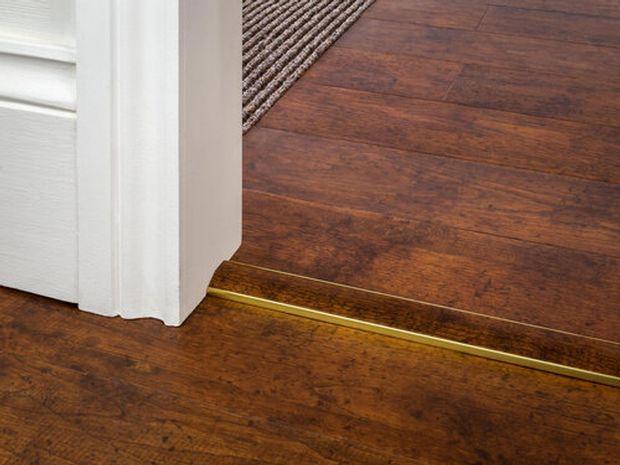
When selecting materials for door thresholds, it’s important to consider both durability and aesthetic appeal. Here’s a look at some common materials and their benefits, so:
- Wood: Wooden thresholds offer a classic and warm look, ideal for traditional homes. Hardwoods like oak, mahogany, or teak are durable and can withstand significant wear. They require regular treatment with sealants or varnish to prevent moisture damage and warping.
- Metal: Metal thresholds, including those made from brass, aluminium, or stainless steel, are known for their durability and strength. Brass thresholds add a touch of elegance and are resistant to corrosion, while aluminium and stainless steel offer a more modern look and are great for high-traffic areas due to their resistance to rust and wear.
- Vinyl or Rubber: These materials are cost-effective and offer good durability. They work well in areas that require a waterproof seal and are easy to clean and maintain. However, they may not offer the same aesthetic appeal as wood, metal, or stone.
Each material has its own set of benefits and can be chosen based on the specific needs of your home and your personal style preferences.
Revamp Your Home With New Door Threshold Strips
Stair Rods Direct are top provider of a range of door threshold strips in different materials, colours and styles. Our cost-effective trims can be used for joining carpets to hard floors, carpets to carpets, and hard floors to hard floors. Their high quality, plus our wealth of information on door threshold installation.


